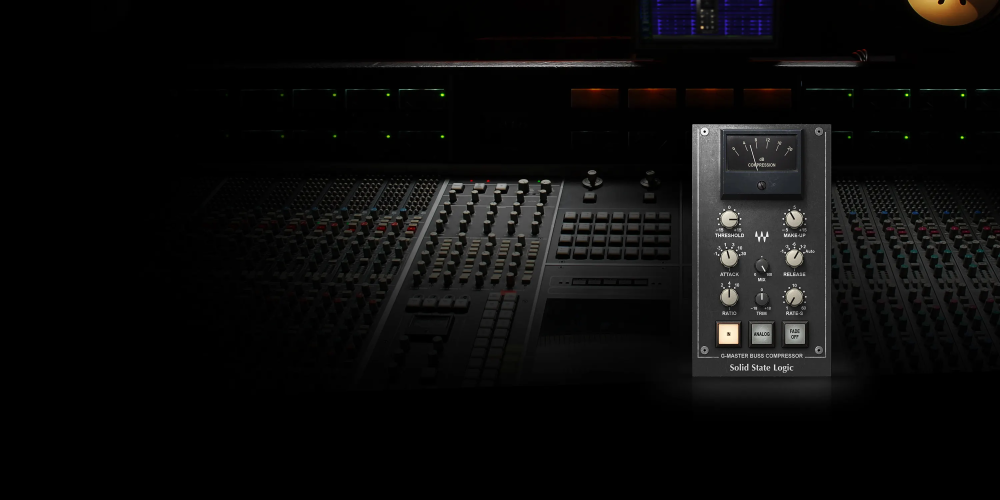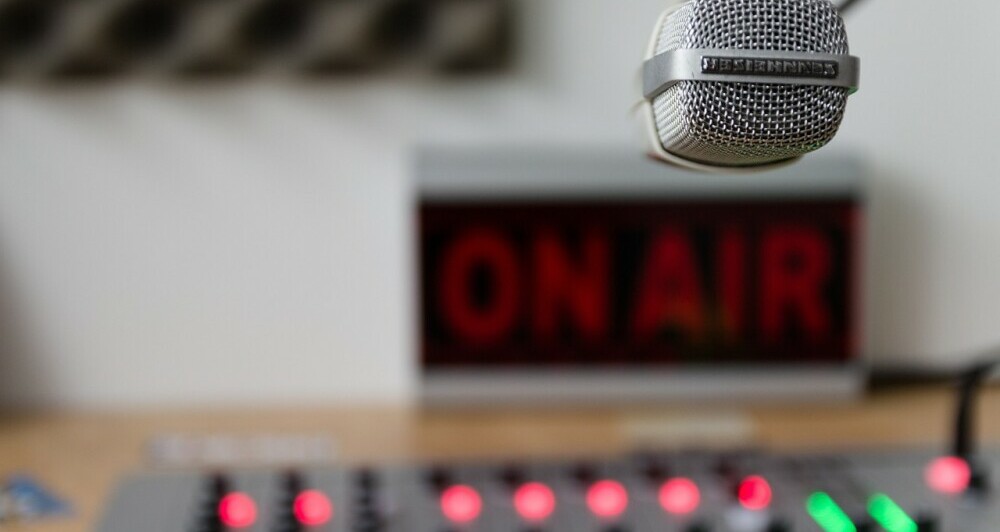Parallel compression is a simple but effective technique that really lift your mixes to a new level adding a lot of punch. This method involves blending a heavily compressed version of an audio signal with the original, uncompressed signal. By doing so, you can enhance the overall sound without sacrificing the natural dynamics and tonal qualities. Parallel was originally known as New York compression. The term comes from its popularity among New York-based mixing engineers in the 1970s and 1980s who sought a way to achieve punchy, powerful mixes without losing the dynamic range.
But are there genres of music that benefit from parallel compression more than others? And what are some examples of case it’s been used effectively? Let’s find out.
The Benefits of Parallel Compression
Parallel compression offers a bunch of advantages that can significantly improve a mix.
Enhanced Dynamic Range: One of the primary benefits of parallel compression is its ability to maintain the dynamic range of the original audio while adding compressed elements. This means you can retain the natural dynamics and transients of the original track, giving it more life and presence. For example, in a song like Adele’s “Hello,” the dynamic range is crucial to convey the emotion in her vocals, and parallel compression can help maintain that while adding fullness.
Increased Loudness without Distortion: By blending a heavily compressed signal with the original, uncompressed signal, you can achieve greater perceived loudness without the harshness or distortion that often comes with heavy compression. This technique helps to make the mix sound fuller and more robust. Think of the powerful sound of Queen’s “Bohemian Rhapsody,” where the mix sounds loud and full without losing clarity.
Better Control Over Transients: Parallel compression helps to manage the attack and release characteristics of the sound more effectively. It can make the transients (the initial, high-energy part of a sound) punchier without losing the body of the sound, giving drums and other percussive elements more impact. It makes the “hits” in your music, like drum beats, more impactful without making everything else sound too squashed.
Fuller Sound: When used on vocals or instruments, parallel compression can add warmth and thickness to the sound. This can make individual tracks stand out more in the mix, resulting in a richer and more cohesive overall sound. An example of this is the lush, full sound of Fleetwood Mac’s “Dreams,” where each instrument feels present and full.
Versatility in Mixing: Parallel compression is a versatile tool that can be applied to various elements within a mix, such as drums, bass, vocals, and even the entire mix. This flexibility allows for creative mixing techniques and can help to shape the sound in unique ways.
Preservation of Original Tonal Characteristics: Because parallel compression blends the compressed and uncompressed signals, it helps to preserve the original tonal characteristics of the audio. This is particularly useful in genres where maintaining the natural sound of instruments is important, such as jazz or classical music. Artists like Norah Jones use these techniques in albums like “Come Away with Me” to keep the instruments sounding natural and dynamic.
Improved Clarity and Definition: By subtly enhancing the quieter parts of the audio while keeping the louder parts intact, parallel compression can improve the clarity and definition of each track. This makes it easier to hear details in the mix, contributing to a more polished and professional sound.
Musical Glue: Parallel compression can act as a “glue” that ties different elements of the mix together. This is especially useful in dense mixes where individual tracks need to work together cohesively. A song like Daft Punk’s “Get Lucky” benefits from this technique to ensure the different layers of sound blend seamlessly.
>>> EQ: Should it Go Before or After Compression? <<<
 How to Add Parallel Compression
How to Add Parallel Compression
Adding parallel compression to your mix involves a few steps, and it can vary slightly depending on the instrument or element you’re working with. Here’s a step-by-step guide:
Step 1: Create an Auxiliary Track (Aux Track)
In your Digital Audio Workstation (DAW), create an auxiliary track. This track will be used to process the compressed version of your original signal.
Step 2: Send the Original Signal to the Aux Track
Send the track you want to compress to the aux track. This is usually done using a send or bus feature in your DAW. Make sure the send is set to pre-fader to ensure the signal level going to the aux track is consistent.
Step 3: Apply Compression on the Aux Track
Insert a compressor on the aux track. Set a high compression ratio (e.g., 4:1 to 10:1), a low threshold, fast attack, and medium release. These settings ensure that the compressor catches the transients and sustains the sound, creating a heavily compressed signal.
Step 4: Blend the Signals
Adjust the fader of the aux track to blend the compressed signal with the original. Start with the aux track level low and gradually increase it until you achieve the desired effect. The idea is to enhance the sound without overpowering the original dynamics.
Step 5: Fine-Tune Settings
Listen to the combined signals and adjust the compressor settings and blend level as needed. You may also want to use EQ on the aux track to shape the compressed signal further, ensuring it complements the original track.
Example Plugins for Parallel Compression:
Waves SSL G-Master Buss Compressor: Known for its ability to add punch and glue, it’s a popular choice for parallel compression on drums and the master bus.
FabFilter Pro-C 2: Offers versatile compression modes and precise control, making it suitable for various instruments and vocals.
Universal Audio 1176: A classic compressor with a fast attack, ideal for adding punch to drums and bass.
Slate Digital FG-401: A flexible compressor with multiple modes, useful for both individual tracks and mix bus compression.
>>> Mixing On Headphones Vs Studio Monitors <<<
 Applying Parallel Compression to Different Instruments
Applying Parallel Compression to Different Instruments
Drums: Drums benefit greatly from parallel compression. Create an aux track, send your drum bus to it, and apply heavy compression. This technique, often called “drum bus compression,” can make the drums sound punchier and more cohesive.
Vocals: For vocals, parallel compression can add warmth and presence. Send the vocal track to an aux track, apply a fast-acting compressor, and blend the compressed signal with the original. This approach ensures the vocal remains clear and consistent.
Bass: Bass can be tricky to balance in a mix. Parallel compression helps by adding sustain and consistency. Apply a compressor with a fast attack and medium release on an aux track, and blend it with the original bass track to maintain punch and clarity.
Guitars: Both electric and acoustic guitars benefit from parallel compression. It adds body and sustain. Create an aux track, apply compression, and blend it with the original signal to achieve a fuller, more expressive guitar sound.
Pianos and Keyboards: Parallel compression can enhance the attack and sustain of pianos and keyboards, giving them more presence and definition in the mix. The keyboards in Stevie Wonder’s “Superstition” benefit from such enhancements to cut through the mix.
Strings and Orchestral Elements: For strings and other orchestral elements, parallel compression can add richness and depth, helping these instruments to blend well together while maintaining their individual character. The lush strings in Hans Zimmer’s film scores are a good example of this.
Master Bus: Applying parallel compression on the master bus can help glue the entire mix together. Send the entire mix to an aux track, apply a gentle compressor (e.g., 2:1 ratio), and blend the compressed signal with the original mix. This technique enhances the overall loudness and cohesion of the mix.
 Downside of Parallel Compression
Downside of Parallel Compression
While parallel compression has its benefits, there are also some pitfalls to be aware of:
Over-Compression: One common mistake is applying too much compression, which can result in a mix that sounds squashed and unnatural. It’s important to find the right balance between the compressed and uncompressed signals.
Phase Issues: Sending signals to an aux track and back can sometimes introduce phase issues, especially if there are latency problems. Ensuring proper phase alignment is crucial to avoid any unwanted artifacts in the sound.
Loss of Dynamics: While parallel compression is designed to preserve dynamics, improper use can still lead to a loss of natural dynamics. It’s essential to use this technique judiciously to maintain the intended dynamic range of the music.
Cluttered Mix: Adding too much compressed signal can make the mix sound cluttered and muddy. It’s important to use parallel compression in moderation and to carefully blend the signals to achieve the desired effect without overwhelming the mix.
Genres that Benefit the Most
Parallel compression is a versatile technique that can be applied to various genres of music, but some genres benefit more from its use:
Pop: In pop music, where clarity and loudness are crucial, parallel compression helps to enhance the overall sound, making it more polished and radio-friendly. Songs like Taylor Swift’s “Shake It Off” benefit from this technique to maintain a clear and punchy mix.
Rock: Rock music often relies on powerful drums and guitars. Parallel compression can add the necessary punch and fullness to these elements, resulting in a more energetic and impactful sound. The Foo Fighters’ “Everlong” is a good example of rock music benefiting from parallel compression.
Hip-Hop: In hip-hop, where the rhythm section plays a central role, parallel compression can help to make the drums and bass sound more prominent and punchy. Kendrick Lamar’s “HUMBLE.” features strong drum and bass elements that are enhanced with parallel compression.
Electronic Dance Music (EDM): EDM tracks often require a loud and energetic mix. Parallel compression helps to achieve the desired loudness and punch without sacrificing clarity. Calvin Harris’ “Summer” benefits from parallel compression to maintain its energy and drive.
Jazz and Acoustic: While maintaining natural dynamics is important in these genres, parallel compression can add subtle enhancements to the sound, making it fuller and more cohesive without losing the organic feel. Diana Krall’s “The Look of Love” benefits from the subtle use of parallel compression.
>>> Using Convolution Reverb for Realistic Sounds <<<
 Parallel Compression or Not
Parallel Compression or Not
Understanding when to use parallel compression and when to avoid it is crucial for achieving the desired sound. Here are some examples of songs that feature prominent parallel compression and some that do not, along with the reasons for each approach:
With Parallel Compression:
- Daft Punk – “Get Lucky”: This song benefits from parallel compression to enhance the punch of the drums and the presence of the bass, creating a cohesive and driving rhythm that is characteristic of dance music. The technique ensures that the rhythm section is prominent and energetic, making the track highly danceable.
- Adele – “Rolling in the Deep”: Parallel compression is used to add fullness and warmth to Adele’s powerful vocals, ensuring they cut through the mix without losing their dynamic expression. This allows her voice to remain emotive and strong throughout the song, maintaining its impact.
Without Parallel Compression:
- Nirvana – “Smells Like Teen Spirit”: While aggressive and dynamic, this song relies more on traditional compression techniques to maintain the raw and unpolished feel that is essential to grunge music. The absence of parallel compression helps preserve the track’s rough, edgy character.
- Radiohead – “Creep”: This track maintains its dynamic range and emotional impact through careful use of traditional compression and minimal parallel compression. The song’s quiet-loud-quiet structure benefits from preserving the natural dynamics without additional processing.
in a Nutshell 🥜
Parallel compression is a powerful tool in the hands of an experienced audio engineer. It offers numerous benefits, including enhanced dynamic range, increased loudness without distortion, better control over transients, and a fuller sound. By understanding how to add parallel compression effectively and knowing when to use it, you can significantly improve the quality of your mixes. Whether you’re working on drums, bass, vocals, guitars, or the entire mix, parallel compression can help you achieve a professional and polished sound. However, it’s essential to use this technique judiciously to avoid over-compression, phase issues, and a loss of natural dynamics. With practice, parallel compression can become an invaluable part of your toolkit.




